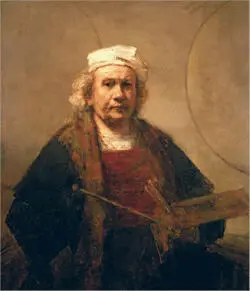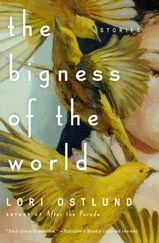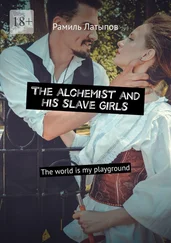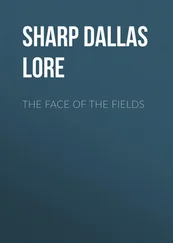
Self-Portrait , c. 1663 Rembrandt van Rijn (1606–69)
This book, like many, has its origins in childhood. Ill in bed, I was given what its owner called a portable museum: dozens of postcards of Old Masters in a shoebox. Among the many pictures of people were some that stood apart, having that intensity about the eyes that even a child recognizes as the sign of a self-portrait. Two stayed out of the box, probably never given back and as mysterious to me now as they were then; both appear in this book.
Jacques-Louis David was a puzzling presence because he appeared puzzled himself; discomforting because he seemed in evident discomfort. I could not have said what was wrong with him or even what was odd about the picture, except that the artist seemed to be in some peculiar sense convalescent, which was exactly how I imagined my state. Or did I learn that from him? The painting drew me in so forcefully with its image of a man who seems strange even to himself that it gave me a sudden insight into how it might feel to be perplexed as an adult.
The events leading up to this moment, what cinema calls the backstory, are exceptionally dramatic. (They are laid out in Chapter 11.) But they only explain the occasion, not the painting, and in re-entering my early response to it I have tried instead to get to the heart of that startling switch that self-portraits can effect, putting you on the spot – in the artist’s position – through their involving intensity of look. You are as he was: contemplating himself; you see him through his own eyes. Growing up, I realized how this resonates with our own experience all the time, the way we consult the mirror to question our appearance, rearrange our looks.
The other self-portrait was not intimate at all: Dürer’s painting of himself in 1500, the midpoint of the millennium, so eerie in its glacial charisma. It looked too modern to have been painted so long ago (a classic reaction to high illusion among children), too alive to be trapped behind ancient glazes and varnish. Although I was quite frightened by the picture, it made me aware for the first time that people in pictures could seem as exciting as people in real life. Much later, a German school friend sent me a postcard of the self-portrait, writing on the reverse that she had quite a crush on Dürer. My art teacher strongly disapproved when I showed it to him, probably suspecting my interest in the face, certainly doubting its status as an image. ‘There’s too much of the artist,’ he declared, ‘in the picture.’ But both his words and hers strike at a defining aspect of self-portraiture – and of this self-portrait in particular – which is the fusion of person with picture. With all portraits, no matter how mediocre the image, how brief and faltering its illusion, there is always the sense of coming face to face with another person before that person reverts to an image. Self-portraits go further in claiming the two to be one and the same.
A person and a picture all in one, the artist as masterpiece: faced with the self-portraits of Dürer, Rembrandt, David, Dickens’s opposition between man and work falls apart. And it is in the oscillation between the two that one perceives the mind at work, for whatever they show of the outer person, self-portraits speak of the inner self too in the character and choice of depiction. Sitters in portraits may assume their own pose, expression, clothes and so forth, although it is remarkable how often artists, especially portraitists like Sargent, control the whole show right down to wardrobe and hair. Self-portraitists do all this and more, true to their own desires about how to picture themselves from within and without, both in and as works of art.
I take these truths to be significant and am struck by the reticence of Poussin, fastidiously withdrawing into an enclosure of his own paintings, almost an abstract of his art; by the unstoppable ego of Courbet trying to thrust his way out of the space of the picture. By Rosa with his glowering mountain-man pose looming above a tablet engraved with the injunction to keep quiet if you’ve nothing better to say, the solemnity of both the words and the image half-mocked by the melodramatic pose.
Rosa speaks loudly, no matter that he is affecting to keep silent. Self-portraiture is rarely the ‘singular, in-turned art’ described by Julian Bell in his classic 500 Self-Portraits , however introspective its reputation. Not even David is talking only to himself, as it seems to me. When Munch painted Self-Portrait in Hell , in which he appears up to his waist in sulphurous paint, he wasn’t simply describing the lonely anguish of being abandoned by a lover who had brought him so much grief the artist had turned a gun on himself (strategically missing everything but the tip of a finger). He was issuing a public accusation specifically for display in an Oslo gallery where anyone, including the press, could see it. Self-portraiture is an opportunity to put across one’s side of the story and it has been exploited at times as a love letter, mission statement or suicide note by other means.
Its special look, so sharp, so expectant, shifts straight into the first person address, and self-portraiture has its counterparts in speech – soliloquies, monologues, laments – as well as the written word in the form of prologues, sonnets, memoirs (in addition to its sublime qualities as a painting, Velázquez’s Las Meninas , with its maze of relationships, may also be the one great novel in art). But the directness and potential intimacy of speech come with peculiar dilemmas and anomalies. Should the self-portrayer show him or herself in the act of painting – true to the moment of creation – or doing something completely different that might appear more impressive but less plausible? And if painting, should the picture in view be this one or another? And if this one, what about the paradox of timing – I show myself in the middle of painting, but my picture is obviously finished. The supposedly direct relation between mirror and canvas is confusing and even compromised. Who is this in the mirror: myself or another, I or he? And when painted, has this self become someone independent of me? Some artists, for instance Sargent in an image so devoid of inner stresses it might as well be a portrait, or Titian in a magnificent self-portrait in which he is looking away and clearly impatient to be gone, justify their presence by appearing as far as possible in the alibi of the third person.
And why do artists choose to show themselves in the first place, exposing themselves and their art to the accusations of narcissism so often raised by critics who seem to confuse self-representation with self-regard? Historically, there has never been much money or glory in it; self-portraits, unlike portraits, are rarely commissioned or appraised as the high point of an artist’s career, although well over a thousand have been painted specially for the Vasari self-portrait corridor of the Uffizi since the seventeenth century; an honour, incidentally, that appears to stifle creativity even among some highly original painters. But self-portraits are often called for in more intimate ways – a gift for a friend, a wedding present, the embodiment of reproachfulness, appreciation or love. Goya painted himself in the arms of the doctor who saved him from dying, in gratitude for his life. Murillo painted a self-portrait at his children’s request that would live with them in all its touching benevolence (literally: the picture turns upon the tangible movement of his fingers) after the artist’s death.
Читать дальше













